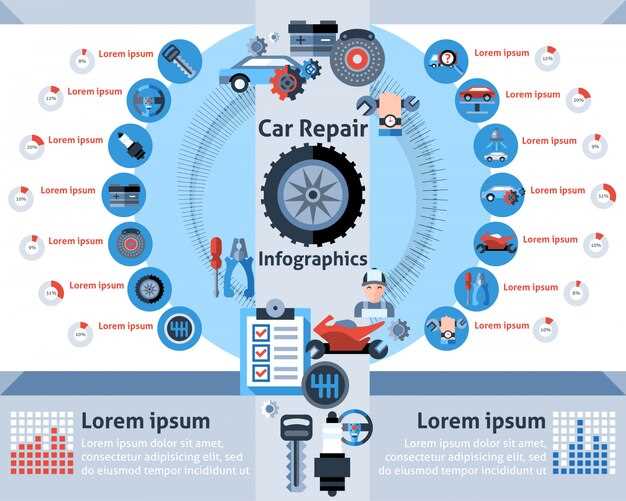
All-wheel drive (AWD) and four-wheel drive (4WD) systems are essential components of modern vehicles, designed to enhance traction and control in various driving conditions. Understanding the differences between these systems and their optimal use can significantly improve a vehicle’s performance, safety, and longevity. Whether navigating through snow-covered streets, tackling off-road trails, or simply managing wet road conditions, the right driving technique can make all the difference.
AWD systems distribute power to all four wheels automatically, making them ideal for everyday driving in diverse weather conditions. This seamless engagement allows drivers to maintain control without needing to make manual adjustments. However, it is crucial to recognize when AWD systems are most beneficial, as relying on them without understanding their limits can lead to overconfidence in challenging terrain.
In contrast, 4WD systems are typically designed for off-road situations, offering superior traction when traversing rough terrains such as mud, rocks, and steep inclines. Many 4WD systems allow drivers to manually switch between 2WD and 4WD modes, providing the flexibility to adapt to various driving scenarios. Proper knowledge of when to engage 4WD is essential, as using it on dry pavement can result in mechanical strain and reduced handling capabilities.
In this article, we will explore the proper use of 4WD and AWD systems, focusing on their unique characteristics, benefits, and best practices for maximizing their performance. By understanding how to effectively utilize these systems, drivers can enhance their vehicle’s capability and ensure a safer driving experience in any environment.
Understanding When to Engage 4WD and AWD Systems

Both 4WD (Four-Wheel Drive) and AWD (All-Wheel Drive) systems are designed to improve vehicle traction and handling in various driving conditions. However, knowing when to engage these systems can enhance performance and safety.
Here are key scenarios for using 4WD and AWD:
When to Use 4WD

- Off-Roading: Engage 4WD when driving on rugged terrains, such as dirt roads, mud, or sand.
- Snow and Ice: Activate 4WD for better traction in deep snow or on icy surfaces.
- Steep Inclines: Use 4WD while ascending or descending steep hills to maintain control.
- Rough Conditions: Engage 4WD when encountering rocky or uneven surfaces that require enhanced stability.
When to Use AWD
- Wet Pavement: AWD can be beneficial during rain to reduce hydroplaning risks and improve traction.
- Light Snow: Engage AWD for enhanced stability in light snow or slush on regular roads.
- Variable Road Conditions: Use AWD when experiencing fluctuating road conditions, such as patches of ice mixed with dry pavement.
- Everyday Driving: AWD systems can be left engaged for routine driving in climates with consistent rain or snow.
Understanding your driving environment and knowing when to activate 4WD or AWD can help maximize vehicle performance and ensure safety on the road.
Techniques for Driving on Different Terrains with 4WD and AWD
Driving on various terrains requires distinct techniques, especially when utilizing 4WD (Four-Wheel Drive) and AWD (All-Wheel Drive) systems. Understanding the appropriate use of these systems can enhance vehicle performance and ensure safety.
When navigating on loose surfaces like gravel, sand, or mud, engaging 4WD is advisable. This provides maximum traction by distributing power to all four wheels. Drivers should perform smooth acceleration and avoid sudden movements to prevent wheel spin. When stuck, gently rocking the vehicle back and forth can help free it from being bogged down.
For driving on steep inclines, use low-range gearing in 4WD if available. This increases torque and helps maintain control while ascending or descending hills. Keep a steady throttle to avoid losing momentum, and avoid abrupt braking on descents, which can cause skidding. Instead, use engine braking to control speed.
On rocky or uneven terrain, it is crucial to select the appropriate mode in the 4WD system. Low-range 4WD is ideal for navigating obstacles while maintaining traction. Drivers should approach rocks and obstacles at a gentle angle to minimize impact and avoid damage to the undercarriage. Maintaining a slow and steady pace is key to traction and stability.
When driving in snowy or icy conditions, AWD generally provides better handling and stability compared to 4WD. However, it’s important to adjust your driving style, including slower speeds and increased stopping distances. Anti-lock braking systems (ABS) can enhance safety, but be sure to apply brakes gently to maintain control.
In off-road situations, using differential locks can assist with traction in challenging environments. Engage these features when one or more wheels are spinning to ensure power is effectively distributed. Always be aware of your surroundings and vehicle capabilities to prevent getting stuck.
For urban environments with variable weather, AWD offers the advantage of seamless transition between drive modes. Be mindful of road conditions, particularly during rain or snow, and adjust your speed accordingly. Anticipate turns and brakes earlier to maintain control.
Finally, regular maintenance of the 4WD or AWD system is crucial. Ensure that tires are adequately inflated and have good tread, and keep an eye on fluid levels and condition. Familiarize yourself with the specific functionalities and capabilities of your vehicle’s AWD or 4WD system to optimize performance across different terrains.
Maintenance Tips to Ensure Long-Term Performance of 4WD and AWD Systems
Regular maintenance is essential for the optimal performance of 4WD and AWD systems. Begin by consulting the owner’s manual to understand the manufacturer’s recommendations for servicing intervals and fluid types. Adhering to these guidelines ensures components function correctly.
Check and replace the transfer case fluid as recommended, typically every 30,000 to 50,000 miles. Old or contaminated fluid can lead to increased wear and tear on internal components, affecting system performance.
Inspect the differential fluids in both the front and rear axles. Like transfer case fluid, differentials should be serviced at regular intervals to prevent overheating and gear damage. Clean gear oil is crucial for maintaining lubrication and protecting against friction.
Examine the driveshaft and U-joints for wear or damage. Look for signs of rust, excessive play, or unusual noises during operation. Addressing any issues promptly can prevent more extensive damage and costly repairs.
Regularly check tire pressure and tread depth, as mismatched tires can cause stress on the drivetrain. Ensure all four tires are evenly worn and maintained at the recommended pressure to promote balanced traction and handling.
During routine inspections, pay attention to the suspension components. Worn shocks or struts can affect weight distribution, leading to insufficient traction and potential system malfunction. Replace any damaged parts as soon as possible.
Keep an eye on the electronic components and sensors involved in the AWD or 4WD systems. Diagnostic tests can help identify any malfunctions early, allowing for timely repairs that prevent further damage.
Finally, consider professional servicing for your 4WD or AWD vehicle periodically, especially if you frequently engage in off-road driving. Specialized knowledge can help ensure that critical components receive the attention they require to maintain peak performance.





